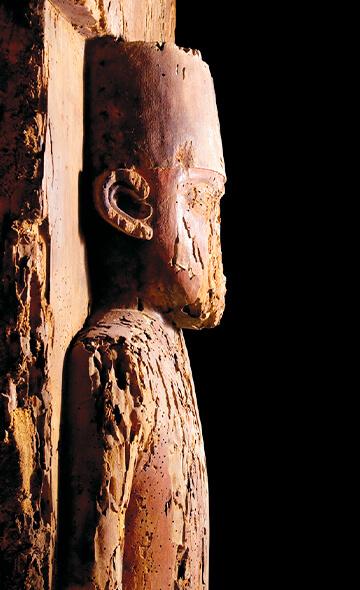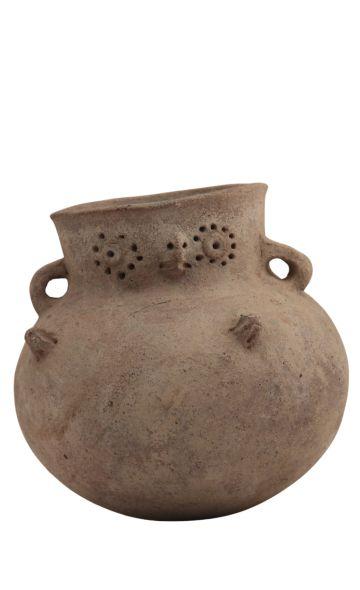- Visitors
- Researchers
- Students
- Community
- Information for the tourist
- Hours and fees
- How to get?
- Visitor Regulations
- Virtual tours
- Classic route
- Mystical route
- Specialized route
- Site museum
- Know the town
- Cultural Spaces
- Cao Museum
- Huaca Cao Viejo
- Huaca Prieta
- Huaca Cortada
- Ceremonial Well
- Walls
- Play at home
- Puzzle
- Trivia
- Memorize
- Crosswords
- Alphabet soup
- Crafts
- Pac-Man Moche
- Workshops and Inventory
- Micro-workshops
- Collections inventory
- News
- Researchers
- Conservation of the Wooden Idol
News
CategoriesSelect the category you want to see:
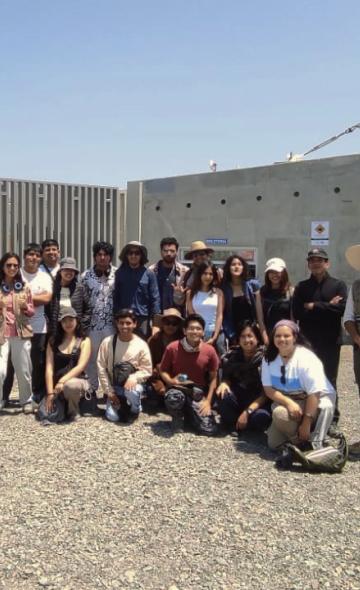
PUCP Archaeology Students Visit the El Brujo Archaeological Complex ...
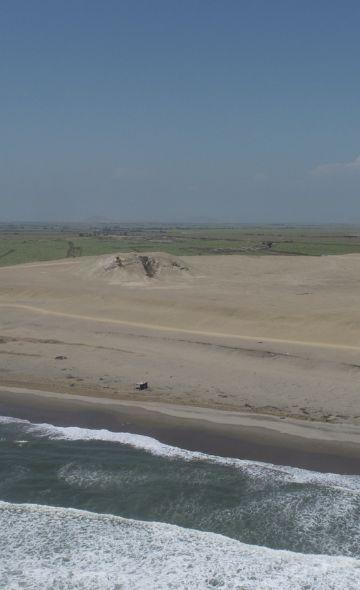
The Republican Settlements of El Brujo: Notes for the Recent History of Magdalena de Cao ...
To receive new news.
By: Rubén Buitrón
By Rubén Buitrón
One of the main objectives of Wiese Foundation, through the Cao Museum, is the safeguarding and preservation of the movable and immovable cultural assets of the El Brujo Archaeological Complex. For this reason, the pieces exhibited in the Cao Museum are subjected to a rigorous monitoring process. One of our main attractions is the so-called “Wooden Idol”. It is a sculpture made from a lucumo wood block that measures 2.48 m in height. It depicts a personage in a frontal position, wearing a headdress with two facing felines. This piece was discovered in 1997 and was deposited as an offering during the construction of the second building of the Huaca Cao Viejo. Its fine carving, size and polychromy make it a unique and exceptional archaeological piece of the El Brujo Complex and Peru.
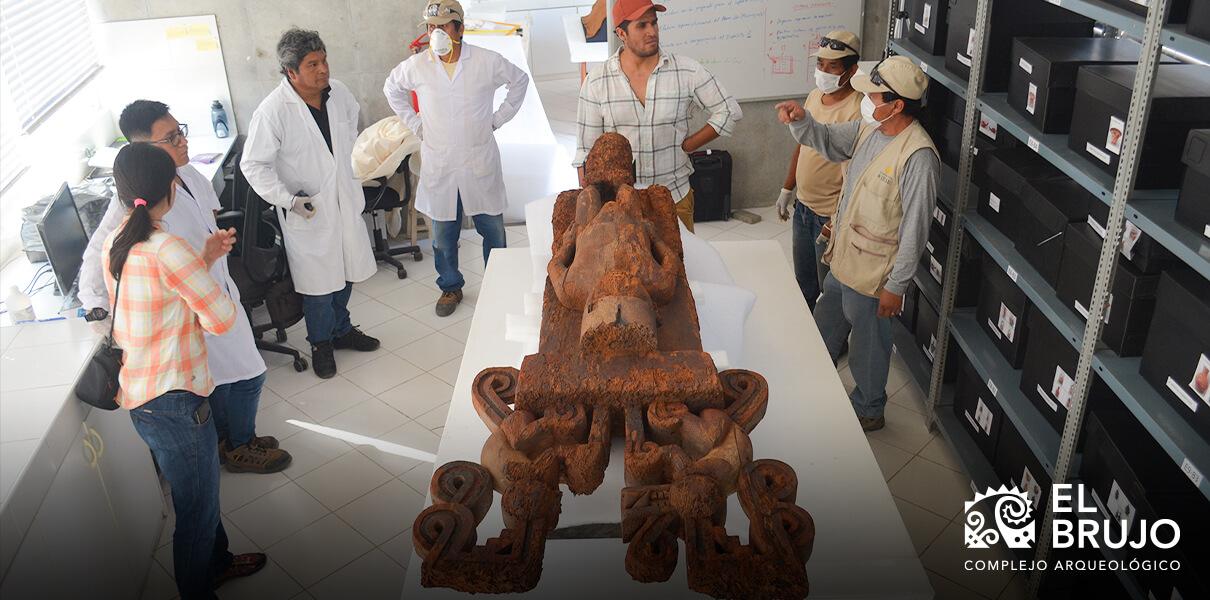
Due to its immeasurable historical and artistic value, the idol underwent rigorous conservation treatment. The objective was to mitigate deterioration agents and to structurally stabilize the piece.
Treatment began with the development of a comprehensive diagnosis of the piece. Thus, damages, agents of deterioration and risks were identified. In the same way as people, cultural assets receive differentiated diagnoses, which allows the specialist to propose the most appropriate treatment. One of the most basic technical processes for the preservation of cultural property is mechanical cleaning. This allows removing those elements that generate degradation to the piece. This process was slow and thorough, considering that the idol exceeds two meters in height.
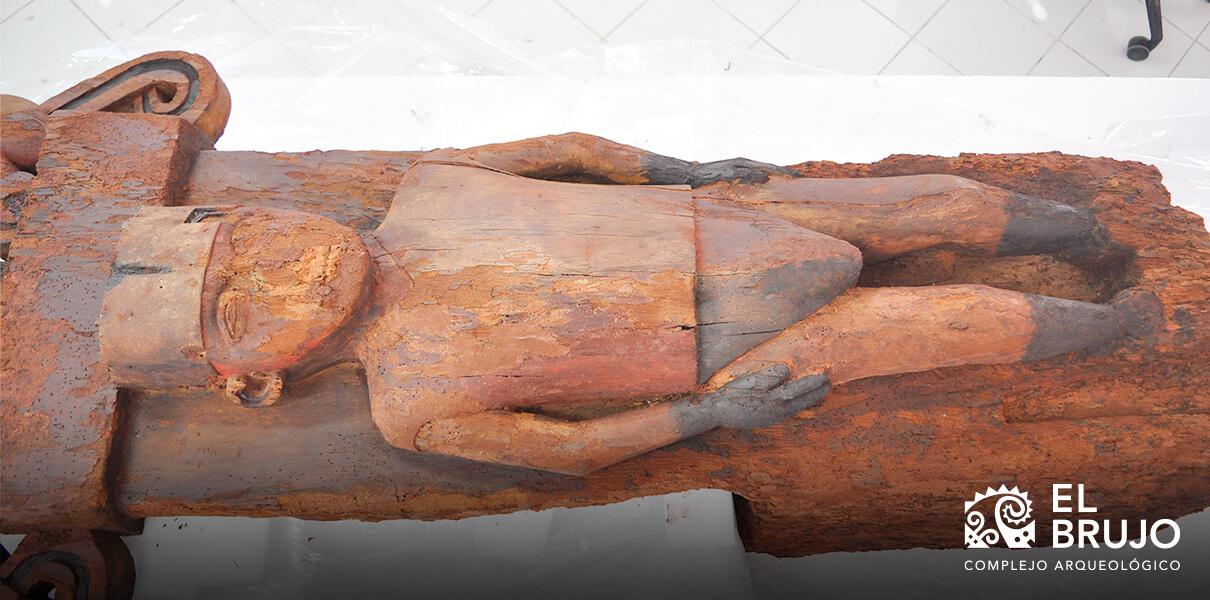
When the presence of biological deterioration agents is suspected or identified, the controlled atmosphere technique is used. This procedure consists in placing the piece inside a sealed chamber and injecting gases that prevent the metabolism of insects, which could be found inside the piece. The idol, being made solely of wood and having a large volume, is vulnerable to the effects of insects. For this reason, it underwent this technique for 20 days. Once the procedure was concluded, we obtained the guarantees of a total disinfection of harmful biological agents; that is, all the insects died.
Finally, a local reintegration was carried out in areas that presented structural risk and prevented an adequate reading of the piece. The results of the conservation process were favorable for its preservation, as it prevented the attack of insects and reinforced its structural stability.
These technical processes allow cultural assets to be preserved for the enjoyment of visitors and future generations. Conservation work means that cultural assets can physically prevail as witnesses to the social processes of our ancestors, and thus contribute to the improvement of society.
If you want to learn more about the wooden idol, organize your group visit to El Brujo, here.
Researchers , outstanding news


